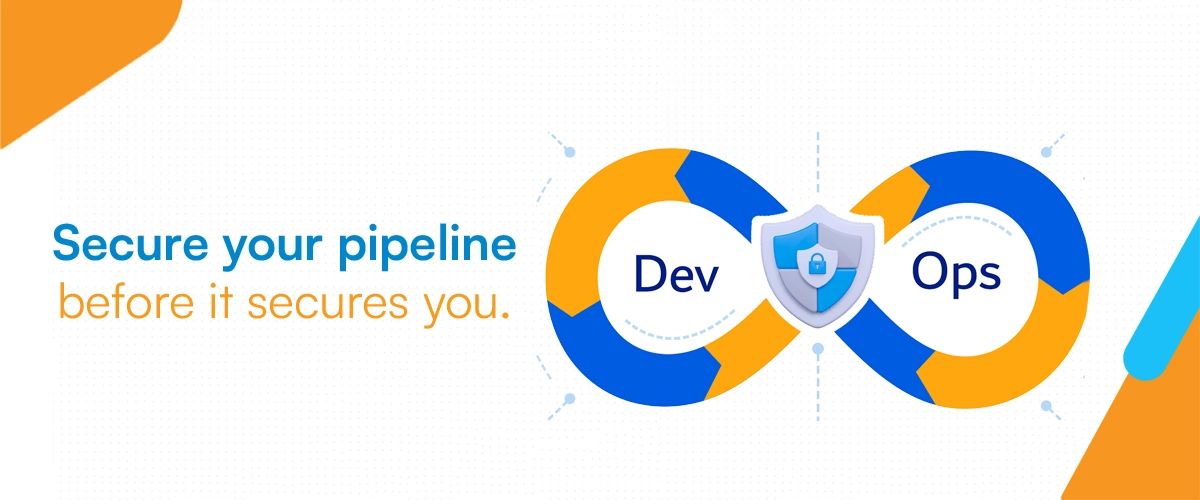
In today’s cloud automation world, DevOps teams are under constant pressure to deliver faster, more frequently, and at scale without compromising on security. As deployments grow more complex and distributed across microservices, Kubernetes clusters, and multi-cloud environments, the traditional approach to manual compliance checks simply cannot keep up. This is where CloudLaunchPad becomes a game-changer.
CloudLaunchPad is more than just an automation tool; it acts as an intelligent orchestrator for infrastructure provisioning, deployment governance, policy enforcement, and continuous compliance. By integrating seamlessly into your DevOps pipeline, it ensures that security is not an afterthought, but an automated, embedded part of your delivery process.
In this blog, we’ll explore how DevOps pipelines should implement industry-standard best practices for security and compliance and how CloudLaunchPad can help automate these critical controls end-to-end.
Why Security in DevOps Pipelines Matters?
Modern DevOps pipelines operate at high velocity: code is committed, built, tested, packaged, and deployed, sometimes multiple times a day. While this speed enables rapid innovation, it also introduces new risks:
- Misconfigured cloud infrastructure
- Unsecured container images
- Vulnerable open-source dependencies
- Non-compliant deployments
- Lack of audit trails
A single misstep in the CI/CD workflow can expose an organisation to data breaches, production outages, or compliance violations. This is why adopting DevSecOps, which shifts security “left” into the pipeline, is no longer optional.
DevOps Pipeline Security Best Practices
To secure modern cloud environments, every mature DevOps pipeline must integrate the following best practices:
1. Infrastructure as Code (IaC) Scanning
Tools like Terraform, CloudFormation, Helm, and Kustomize should be scanned before provisioning to detect:
- Publicly exposed resources
- Weak IAM roles and policies
- Misconfigured networking rules
- Non-encrypted storage or traffic
2. Secrets Management
No hardcoded passwords, API keys, or certificates. Use:
- AWS Secrets Manager
- HashiCorp Vault
- SSM Parameter Store
- Kubernetes Secrets (with encryption at rest)
3. Container Security
Containers should be scanned for:
- CVEs (vulnerabilities)
- Outdated base images
- Misconfigured Dockerfiles
- Unnecessary root privileges
4. Policy Enforcement (OPA / Gatekeeper / Cloud Policies)
Enforce rules such as:
- Only approved AMIs can be used
- No public S3 buckets
- Mandatory tags for resources
- Pod security restrictions in Kubernetes
5. Continuous Compliance
Your cloud resources must always meet:
- CIS benchmarks
- ISO / SOC compliance
- Internal security policies
6. Automated Testing and Deployment Gates
Before deploying to staging or production, pipelines must include:
- Automated unit/integration tests
- Smoke tests
- Security tests
- Approval workflows
7. Audit Logging and Monitoring
Track:
- Who deployed what
- When it was deployed
- Which resources were changed
- Whether policies were violated
Where CloudLaunchPad Fits Into Your Pipeline
CloudLaunchPad is designed from the ground up to solve these challenges. It automates compliance, ensures secure provisioning, and adds intelligence to your CI/CD workflow. Let’s break down how it enhances the pipeline.
1. Automated IaC Compliance with CloudLaunchPad
Whenever you run your Terraform or cloud deployment scripts through CloudLaunchPad:
- It scans the infrastructure code for misconfigurations
- Identifies policy violations
- Automatically fixes or blocks deployment if required.
For example:
- S3 bucket without encryption? CloudLaunchPad detects it → adds encryption policy.
- Public load balancer without WAF? Deployment is blocked until a secure configuration is provided.
This ensures every environment, dev, staging, and prod follows your organization’s security baseline.
2. Secure Deployment Orchestration
CloudLaunchPad integrates with all major CI/CD tools:
- Jenkins
During deployment, it enforces:
- Versioned, controlled rollouts
- Mandatory approvals
- Zero-trust access
- Automated rollback on failure
This not only secures deployment but also reliability and repeatability.
3. Compliance as Code with CloudLaunchPad Policies
Instead of manual reviews, CloudLaunchPad converts security rules into reusable policy sets.
For example:
- “No instance should run without tags (Owner, Environment, Cost-Centre)”
- “All Kubernetes services must use ClusterIP unless approved.”
- “All RDS instances must have automated backups enabled.”
These policies run automatically for every pipeline execution.
4. Integration with DevOps tools for Continuous Security
CloudLaunchPad seamlessly connects with:
- Secrets managers
- Monitoring tools: Prometheus, Grafana
This gives developers a single pane of glass to track:
- Vulnerabilities
- Infrastructure changes
- Policy violations
- Compliance status
5. Automated Cloud Governance
CloudLaunchPad goes beyond CI/CD. It also ensures your cloud environment stays compliant after deployment.
It continuously checks for:
- Drift detection
- Resource misconfiguration
- IAM over-permissioning
- Unused resources incur cost
If something violates the company policies, CloudLaunchPad can:
- Auto-remediate
- Auto-notify
- Auto-rollback
This brings true DevSecOps maturity to your organisation.
6. Complete Audit Trails and Reporting
CloudLaunchPad generates:
- Detailed logs of deployments
- Change history for every environment
How CloudLaunchPad Improves DevOps Team Productivity
By automating compliance and security checks, CloudLaunchPad enables DevOps engineers to:
✓ Focus on innovation instead of manual reviews
✓ Deliver more secure deployments at higher speed
✓ Eliminate repetitive configuration mistakes
✓ Reduce security incidents and production downtime
✓ Scale deployments across multiple teams and projects
✓ Maintain consistent, compliant cloud environments
In short, CloudLaunchPad helps you achieve secure, automated, scalable DevOps.
Conclusion: The Future of DevOps Is Automated Security
As organisations continue their digital transformation, the pressure to deliver fast and securely will only intensify. Manual checks and outdated governance models cannot keep up with cloud-native complexity.
Tools like CloudLaunchPad bring a new era of DevSecOps automation, one where compliance, security, and reliability are baked directly into the pipeline.
By integrating CloudLaunchPad into your DevOps workflow, you ensure:
- Every deployment is secure
- Every environment stays compliant
- Every engineer follows best practices
- Every audit becomes effortless
If you want to scale your DevOps practices confidently and securely, CloudLaunchPad is not just an option; it is a necessity.


